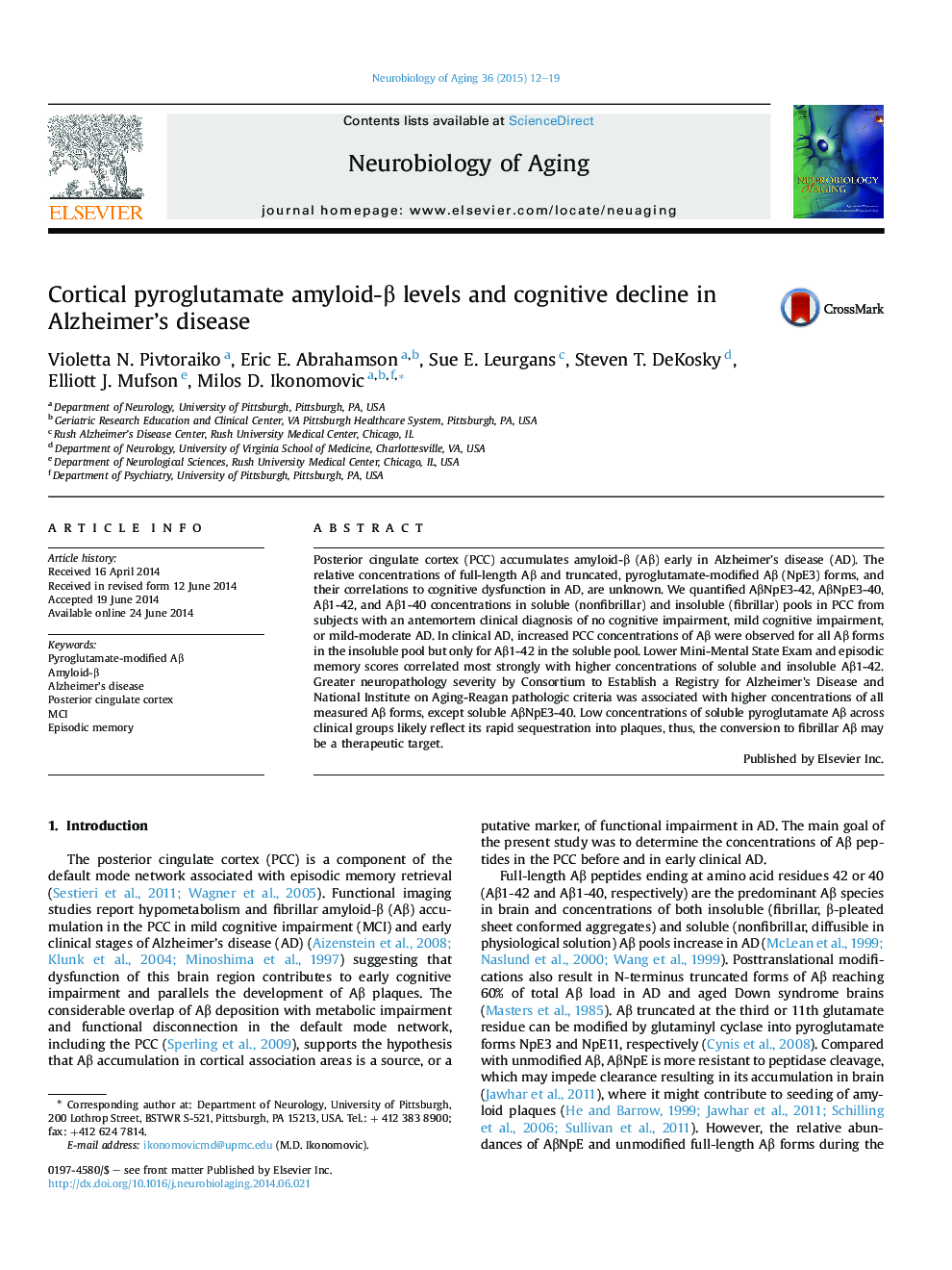| Article ID | Journal | Published Year | Pages | File Type |
|---|---|---|---|---|
| 6804896 | Neurobiology of Aging | 2015 | 8 Pages |
Abstract
Posterior cingulate cortex (PCC) accumulates amyloid-β (Aβ) early in Alzheimer's disease (AD). The relative concentrations of full-length Aβ and truncated, pyroglutamate-modified Aβ (NpE3) forms, and their correlations to cognitive dysfunction in AD, are unknown. We quantified AβNpE3-42, AβNpE3-40, Aβ1-42, and Aβ1-40 concentrations in soluble (nonfibrillar) and insoluble (fibrillar) pools in PCC from subjects with an antemortem clinical diagnosis of no cognitive impairment, mild cognitive impairment, or mild-moderate AD. In clinical AD, increased PCC concentrations of Aβ were observed for all Aβ forms in the insoluble pool but only for Aβ1-42 in the soluble pool. Lower Mini-Mental State Exam and episodic memory scores correlated most strongly with higher concentrations of soluble and insoluble Aβ1-42. Greater neuropathology severity by Consortium to Establish a Registry for Alzheimer's Disease and National Institute on Aging-Reagan pathologic criteria was associated with higher concentrations of all measured Aβ forms, except soluble AβNpE3-40. Low concentrations of soluble pyroglutamate Aβ across clinical groups likely reflect its rapid sequestration into plaques, thus, the conversion to fibrillar Aβ may be a therapeutic target.
Related Topics
Life Sciences
Biochemistry, Genetics and Molecular Biology
Ageing
Authors
Violetta N. Pivtoraiko, Eric E. Abrahamson, Sue E. Leurgans, Steven T. DeKosky, Elliott J. Mufson, Milos D. Ikonomovic,
